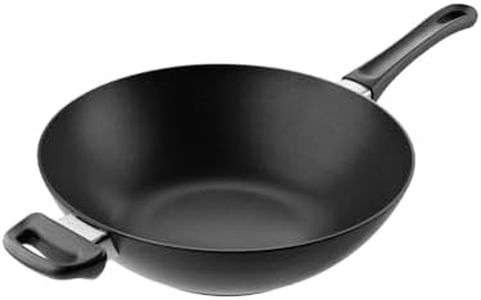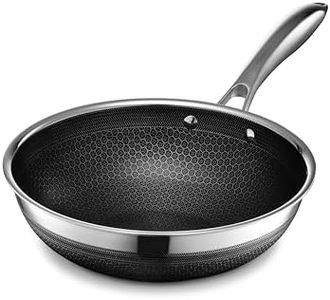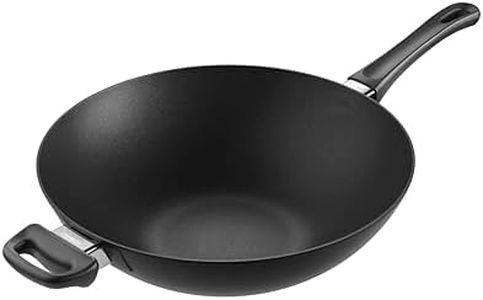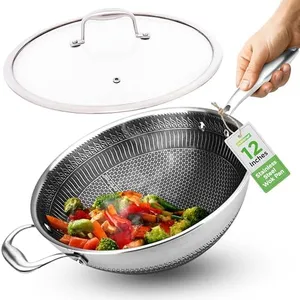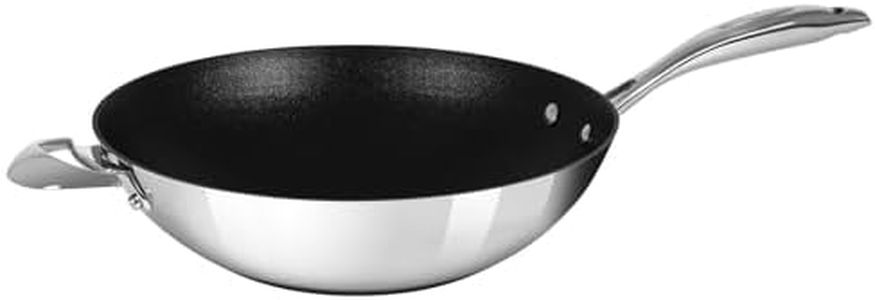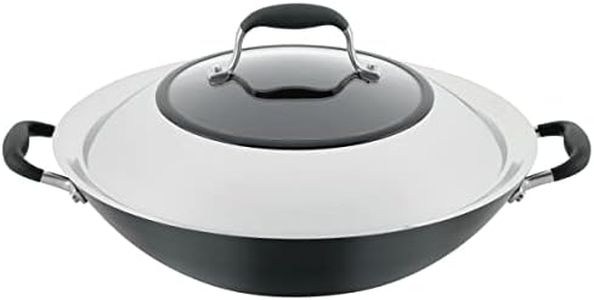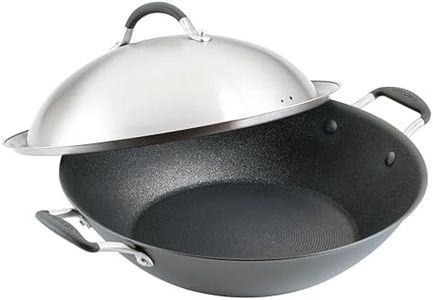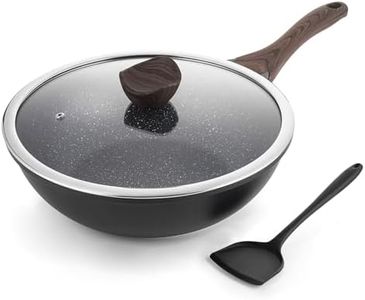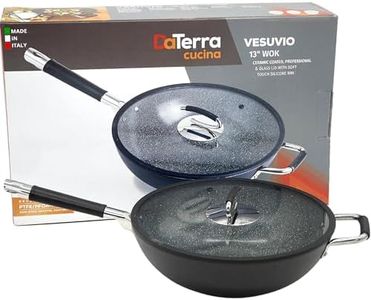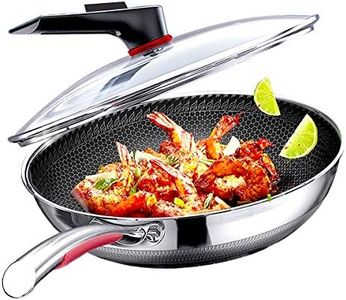We Use CookiesWe use cookies to enhance the security, performance,
functionality and for analytical and promotional activities. By continuing to browse this site you
are agreeing to our privacy policy
10 Best Wok Non Stick
From leading brands and best sellers available on the web.Buying Guide for the Best Wok Non Stick
Choosing a non-stick wok is a great way to make stir-fries and many other dishes with less oil and easy cleanup. The most important part of picking the right wok is thinking about what kind of cooking you do, how often you cook Asian-style meals, and how much effort you want to spend maintaining your cookware. The right wok should feel comfortable to lift, heat up evenly, and suit the meals and quantity you usually prepare.Material and CoatingThe material and coating of a non-stick wok mostly refer to what the wok is made of (often aluminum or stainless steel) and what type of non-stick surface is on it (such as PTFE or ceramic). This is important because it affects heat conduction, cooking performance, and how easy it is to clean. If you want an easy-care option, look for a reputable non-stick surface, but keep in mind that some coatings scratch more easily and may have limitations on heat or utensil types. For most regular home cooks, a standard non-stick coating balances ease and durability; if you’re sensitive to chemicals, consider ceramic as an alternative.
Wok Size (Diameter)Wok size usually refers to the diameter across the top edge. This matters because a larger wok lets you cook more food at once, but it also takes up more storage and may be heavier. Woks typically range from about 10 inches to 14 inches in diameter. For 1-2 people, a smaller wok (10–12 inches) is usually sufficient; families or people who entertain often may prefer a larger wok (13–14 inches or more). Consider your usual batch size and stovetop space to decide.
Handle TypeWoks generally have either a single long handle (similar to a frying pan) and a small helper handle or two small loop handles. This is important for grip, safety, and ease of tossing or carrying. If you do a lot of tossing or like the one-handed control style, a long handle is more practical. For oven-use or heavy woks, two short handles can be more stable. Consider your preferred cooking method and how comfortable you are lifting heavier pans when the wok is full.
Compatibility with CooktopsNon-stick woks may have either a flat or round bottom. This matters because a round-bottom wok will not sit well on flat cooktops and is suited for gas burners with a wok ring, whereas a flat-bottom wok is designed for direct use on electric, induction, or ceramic stoves. If you have a flat electric or induction stove, always check for a flat-bottom wok, and if using induction, ensure the wok is compatible with induction by checking if it’s magnetic.
WeightWoks come in various weights depending on their material and size. Weight affects both ease of handling and heat retention. Lighter woks are easier for quick tossing and general movement, especially for beginners, but may not retain as much heat. Heavier woks hold heat better, giving more authentic results but can be tiring to handle. Consider your own strength and how much tossing or lifting you tend to do when cooking.
Lid and AccessoriesSome woks come with lids, spatulas, or steaming racks. A lid is useful for simmering or steaming dishes, while accessories can make your wok more versatile. Think about what dishes you want to make and whether you’d benefit from these extras.
Care and MaintenanceNon-stick woks require specific care—usually no metal utensils, hand washing, and avoiding very high heat. The importance here is longevity and preserving the non-stick coating. If low-maintenance cookware interests you, check the manufacturer’s care instructions and see if the wok fits your habits. Consider how much effort you are willing to dedicate to cleaning and storing your cookware.

